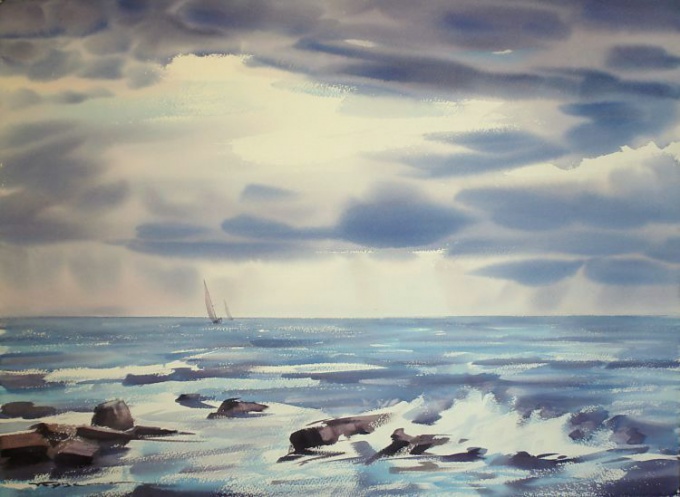You will need
- - A sheet of watercolour paper A3;
- - watercolor;
- - two brushes - thick and thin;
- - solid pencil;
- tablet;
- - masking tape;
- - white wax crayon.
Instruction
1
Learn the "anatomy" of the waves. View ready-made paintings of seascapes, look at the photos. You have to imagine the lines are the waves as they can and not can go look like sea combs, etc. Only after that you can get a realistic seascape.
2
Glue to your sheet of watercolour paper A3 with the help of masking tape. In this case, after you're finished work, around the pattern will turn out neat, white frame.
3
Divide the sheet into two halves by the horizon line. Mark places where there will be waves. Use hard lead pencil and make very light, almost invisible lines. If you are confident in your skills of working with paints, can do without the outline.
4
Take a white wax crayon, grind the tip of a knife. With a pencil draw where there will be clusters of sea foam they have in the end to stay white.
5
Start applying the paint. Swipe a light blue line on the horizon and dilute it down. On the palette, mix a light blue and a bit black. The resulting color and apply just below the first, also blur. Even below the intense blue color rough guide line. Transparent violet shade emphasize the waves in the background. Front, draw another wave. Emphasize the waves in black.
6
Draw the sky. Apply on moistened paper uneven spots of yellow color. Add in the same way purple and red spots around the yellow. It will be sunlight coming through the clouds. Pririsuyte the rest of the sky blue and gray colors, not forgetting to blur them.
7
Add any other elements you desire. For example, flying seagulls.
Wait until the image dries. Remove the duct tape.
Wait until the image dries. Remove the duct tape.
